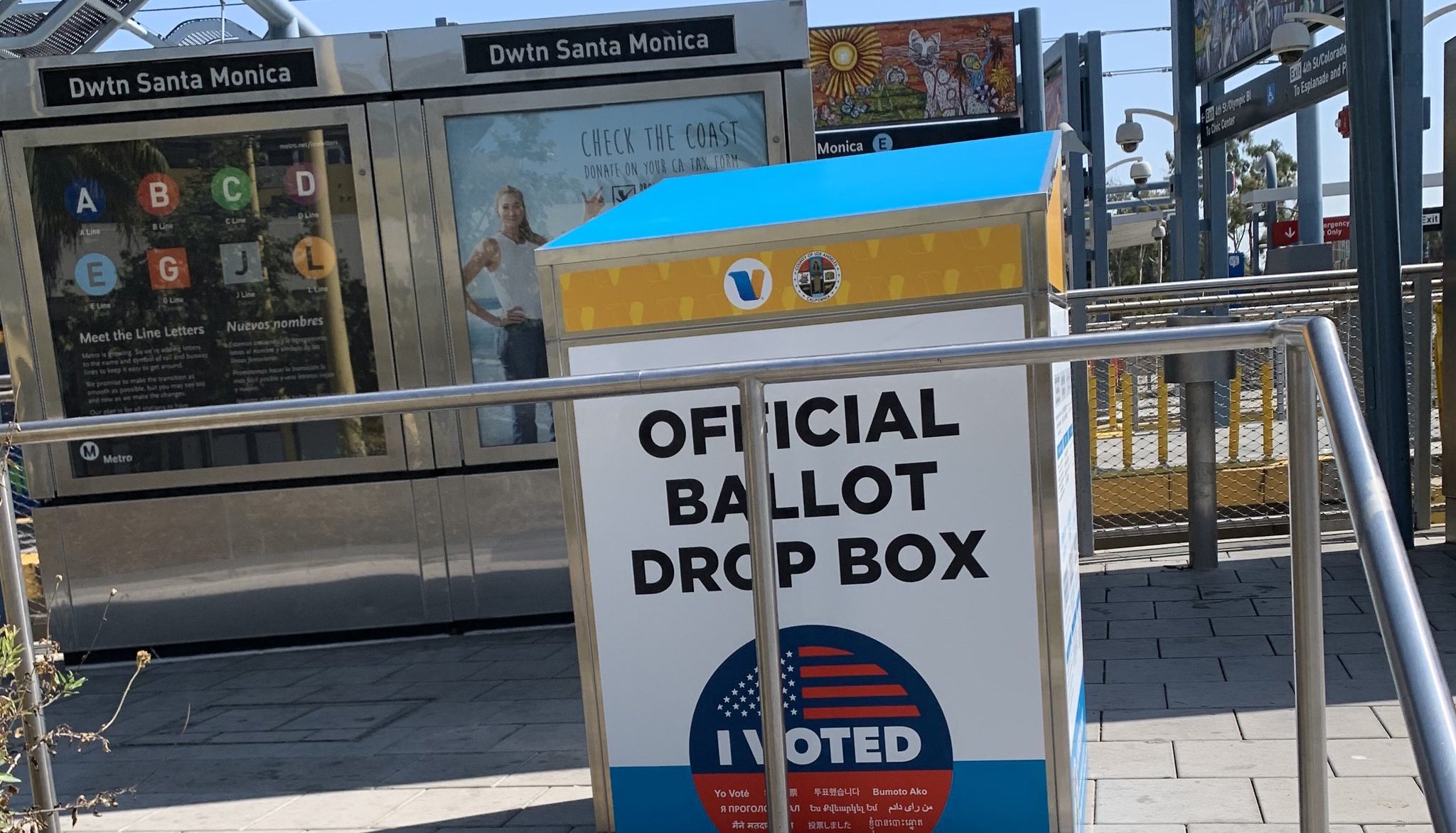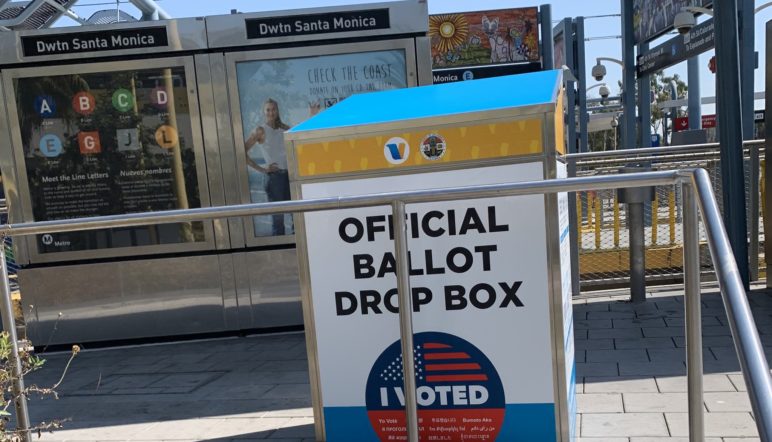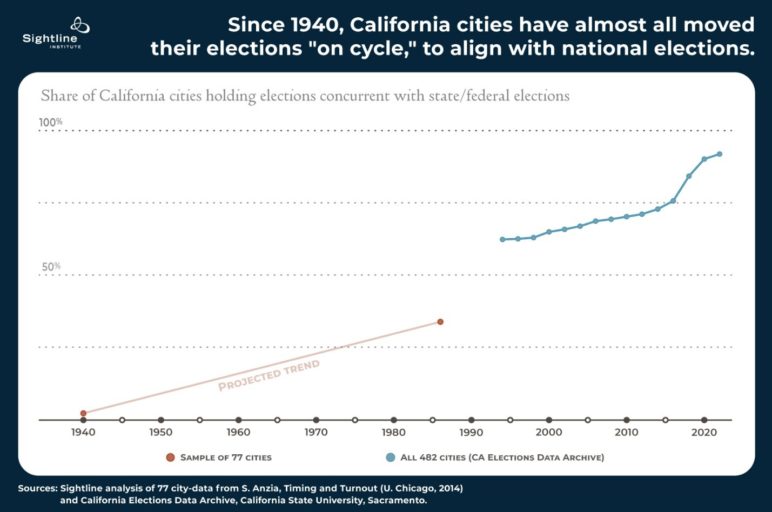Many election reforms—gerrymandering bans, ranked choice voting, proportional representation—are controversial. Winning them is a daunting prospect. But one is snoozingly uncontroversial among US voters, even while it boosts turnout more than any other change scholars have studied.
That reform is election consolidation: rescheduling local elections to occur with national and state elections. Election consolidation is the best-kept secret of reforms, the one turnout reform that rules them all, as Sightline has argued time and again.
When this plan has come before voters, it has passed by wide margins. It has passed with little debate. To voters, synchronizing elections is a no-brainer. There should be one general Election Day, they believe, and it should be the first Tuesday after the first Monday in November of even years. The primary election should precede it by a few months.
Unfortunately, legislators do not always agree. Most state bills to put local elections “on cycle” with national ones quickly die, with little active support or debate. And in many states, including Idaho, Montana, and Washington in Cascadia, state legislatures have not only failed to consolidate elections themselves, they have also barred cities from doing it on their own. They require cities to hold their elections “off cycle” on strange dates or in odd years. Consequently, local voters are stuck with too many elections; local leaders are chosen by small, unrepresentative electorates; and local budgets bleed from churning through unnecessary ballot handling.
Is change possible? Is there a politically realistic path to election consolidation? Yes, there is. Three Western states have blazed the trail in recent decades, and Cascadian states could be next. It starts with mild reforms at the state level that merely let cities consolidate elections. It moves next to ballot measures in multiple cities. And then it returns to legislatures to finish the job.
Electoral winning streak
For the public, election consolidation sells itself, like ice cream on a summer beach. Citizens want to vote less often. They’d rather fill out one long ballot all at once than two short ballots on different days. Or three or four ballots on different days. Or, in the state of Washington, five different ballots on different days.
That’s why on almost every occasion when voters have considered consolidating elections, they have voted “yes” by large—sometimes, staggering—margins.
Consider: In 2015, some 77 percent of voters in Los Angeles approved election consolidation; as did 76 percent of voters in Takoma Park, Maryland; and 91 percent in Chandler, Arizona. In 2016, Scottsdale, Arizona, joined the trend with 90 percent of voters’ agreement. In 2018, Phoenix consolidated elections by a vote of 73 percent, while the California cities of Burbank, Inglewood, and Pasadena did so by votes of 81 percent, 74 percent, and 83 percent respectively. In 2021, some 66 percent of voters in Austin, Texas, agreed to move mayoral elections onto the presidential election cycle.
Most recently, in November 2022, voters in King County, Washington, which encompasses Seattle, approved moving county council and county executive elections on cycle by almost 70 percent (see Charter Amendment 1). (I wrote about this measure here.) The same day, voters in 11 cities considered election consolidation proposals for some or all city offices and passed every single one of them. In Boulder and Fort Collins, Colorado, voters approved consolidation by 63 and 76 percent respectively. Voters in St. Petersburg, Florida, opted to move local elections by 70 percent. In California, they did so in San Jose by 55 percent, Compton by 64 percent, Arcadia by 67 percent, Modesto by 69 percent, San Francisco by 71 percent, Long Beach by 75 percent, Pomona by 75 percent, and Redwood City by 87 percent.
This winning streak is almost unbroken because voters across the political spectrum like their elections rare. In 2008, Sarah Anzia, now a professor at the University of California, Berkeley, surveyed 1,000 Americans about election timing. She found (page 88) that 70 percent of Americans favored holding local elections at the same time as national elections: some 73 percent of Democrats held this view, as did 61 percent of Republicans. Independents fell in between.
The only counterexample to this electoral winning streak that I have found came in 2018 in Tucson, Arizona, where consolidation was supported by only 42 percent of voters (Proposition 408). The reason for this anomaly is that, unlike in other cities, the Tucson ballot question came to voters wrapped in a long-running partisan feud between the progressive city council and the conservative state government. For a decade, the state had been trying to consolidate local elections, and the city council had been fighting back in public and in court. The council put the proposition to voters, and the voters of Tucson—as they saw it—stood up for their party and city. (The partisan dimensions of election consolidation are fascinating and mixed, with strong support and opposition from factions of each major party, and I will devote an entire future article to the topic.)
Even in Tucson, though, the proposition didn’t draw much discussion. In most places, the proposal is such a yawner of obviousness that hardly anyone opposes it. In November 2022, in King County, Washington, the office that oversees elections could not find anyone, in a county of 2.2 million people, who would write a statement against it for the official Voters’ Guide. (Seriously, look at page 36: it’s blank.)
Legislative losing streak
If supported by the public, though, election consolidation is few people’s priority. Most think of it as common-sense but unimportant. No politician becomes a hero by championing the rescheduling of elections, and in fact, powerful interests sometimes oppose it.
Low-turnout elections skew toward reliable voters, who tend above all to be older voters. Reliable voters also tend to be somewhat more educated and are more likely to be white and own their homes. Some researchers have suggested that off-cycle elections also favor motivated and organized constituencies, such as public-sector unions, which have much at stake in local elections and tend to be good at getting their voters to the polls. But research by Vladimir Kogan of Ohio State University and his coauthors suggests such influence is likely overstated.
Local elected officials themselves often oppose reform. They got elected with a certain set of voters. From their perspective, why mess with success? And local elected officials tend to have close ties with the state legislators who write the laws governing when localities hold elections: state law either dictates the schedule of local elections, or it hands localities a short list of options.
The net effect of this combination of forces is inertia: in the absence of public pressure, the status quo continues. Most legislative proposals die. Sarah Anzia, the UC Berkeley professor, found 219 bills in US state legislatures between 2001 and 2011 that promised to consolidate elections. Some 88 percent of them failed. Of the 25 bills that passed, almost all were weak or optional plans.
Three wins, one lesson
Since the period of Professor Anzia’s study ended in 2011, though, Arizona, California, and Nevada have passed new laws that require almost all cities to move elections to November of even years. In each case, local action started the ball rolling and a mild state reform came before a stronger one.
How California got on-cycle elections
In California, as of 1940, a sample of 77 cities studied by Professor Anzia (p. 75) showed that all but 4 percent conducted their elections out of sync with the federal government, as was normal for the time. A trickle of consolidations started among “charter cities,” those big enough to have home rule city charters. In 1981, the state legislature allowed cities without their own charters to join the trickle, and by 1986, some 34 percent of the cities in Dr. Anzia’s sample had consolidated elections. One barrier to even more conversions was that the 1981 law required cities to get approval from their county boards of supervisors, and the board in Los Angeles County—the state’s 500-pound gorilla, with a fifth of its cities and a quarter of its population—rejected every proposal that came before it.
Still, election consolidation picked up speed. By 1995, a data set covering almost all of the Golden State’s 482 cities shows that 62 percent of them, home to about half the state’s urban population, had on-cycle elections.1 In 2015, the L.A. County logjam finally broke when the city of Los Angeles migrated to on-cycle elections by popular vote and when the legislature passed a law requiring low-turnout cities to do the same. Earlier, cities might have objected, but by then, three-quarters of cities had already converted. The remainder were no longer much of a power bloc, and their neighbors were demonstrating again and again that consolidated elections saved money and boosted participation in democracy.
Quickly, local authorities rescheduled their elections: 54 cities, most of them in L.A. County, switched in 2016, 2018, or 2020, and the surge in election consolidation had pushed the share of cities to almost 90 percent, as shown in the figure below. Those cities were home to 88 percent of the state’s urban population. Even more cities joined the parade in 2022, and eight more, including San Francisco and San Jose (and others listed above), approved future consolidation. The new additions will push the share of California cities to well above 90 percent. All but one of the state’s largest 20 cities now hold their elections on cycle.
How Arizona got on-cycle elections
In California, local action led to state action, which led to more local action, which led to more state action. In neighboring Arizona, a similar pattern emerged. From 1940 all the way through 1986, the state’s cities all voted off cycle (page 75). Then, empowered and encouraged in a series of laws, the state’s cities almost all switched. In 2000, the legislature lifted a prior ban on local elections in even-year Novembers, and a few cities began switching. In 2005, the state required localities of more than 175,000 residents to hold their general elections in November, either in even or odd years, rather than in other months, which allowed more cities to consolidate elections.
In 2012, the Arizona legislature passed a law (HB 2826) to push remaining local elections to November of even years, and by 2018, most Arizona cities had complied, including the state’s own 500-pound gorilla Phoenix, which is home to more than a fifth of Arizonans. The cities complied despite the fact that the state supreme court invalidated the 2012 law in the case of home-rule charter cities. Miffed with the court, the 2018 legislature returned to the question and revised its policy to require on-cycle election in all localities with low turnout, copying California’s legal language. A 2021 court decision knocked down the revised language, too; it exempted from the 2018 law charter cities, led by Tucson, but the ruling is largely moot. Almost all Arizona cities run consolidated elections.
How Nevada got on-cycle elections
The story in Nevada has been about the same: every city there voted off cycle before 2001, when Reno won state approval for an election-consolidation amendment to its city charter. In 2003, the legislature allowed non-charter cities to consolidate elections, and cities began to do so. In 2011, the legislature sped the process by letting charter cities make the switch without going through the nettlesome process of amending their charters. By 2019, 12 of the state’s 19 main cities were already on cycle or in the process of transitioning. That year, the legislature approved an election consolidation measure, Assembly Bill 50, that pushed remaining municipal elections onto the statewide cycle. Like the Arizona and California measures, it passed by a wide margin in each house, perhaps because so many cities had already switched.
In each of these states, a trickle of local election consolidation became a flood, and state action moved from allowing to encouraging to requiring consolidated elections. These precedents suggest that in states that currently forbid cities from conducting elections on cycle, a first step might be to advocate for state policies that let cities choose when to hold their elections.
A twisting path
Already, ten US states require on-cycle local elections in almost all cases.2 In Cascadia, they include Oregon and, at the region’s southern edge, California. In about 20 US states, localities may already set their elections to align with national ones, and in these states, the trend is unmistakably toward consolidation. For example, Wyoming, at Cascadia’s eastern edge, began letting cities decide some years ago, and most have now aligned with national elections.
Unfortunately, in the remaining states—about 20 of them—law still bans election consolidation, and four of Cascadia’s states fall in this category: Alaska3, Idaho, Montana, and Washington. In these states, reformers will need to convince legislators to let cities move their elections to when the voters are: in November of even years. Already, Washington State Senator Javier Valdez has introduced SB 5723 to do that. To many legislators and to all cities, it should seem a modest and reasonable proposal, simply to allow cities to decide whether to consolidate elections or not.
If legislators give cities the option, reformers will only need to get the question before voters. Then will come the easy part: voters will say “yes” by crushing margins. To them, election consolidation is, if nothing to get excited about, nonetheless a no-brainer.
After enough cities have consolidated so that opposition has dissipated, legislators can return to the question and finish the work of moving local elections to November of even years. They can boost turnout dramatically, improve representation in local democracy, enhance the accountability of local governments to the public, and save money.
All that is within grasp, if advocates follow the zig-zagging path to election consolidation mapped by Arizona, California, and Nevada.
Thanks to senior research associate Jay Lee for analysis of the California Elections Data Archive, volunteer Todd Newman for research about laws in various states, and University of California, San Diego Professor Zoltan Hajnal for helpful review comments on an earlier draft of this article.











Ruth
Just curious. What reasons do electeds actually give for not supporting consolidated elections?
Alan Durning
Thanks for your question, Ruth. I have heard a variety of arguments against synchronized elections. Recurring ones that I can recall are:
1. Practical concerns about the practicalities and election logistics (e.g., “Will ballots grow to two pages, making it slower to scan them?” Election officials in California responded overwhelming when surveyed that the transition was no problem, as long as they had time to plan ahead)
2. Practical concerns about the transition of fixed terms to a new schedule and related consequences for budgets, bond measures, and the like (Ditto: not a problem with adequate planning and lead time)
3. A concern that local issues will get drowned out in the noise of presidential and midterm election seasons, so voters will be uninformed about local issues during on-cycle elections (the research suggests this concern is unfounded: voters surveyed in on- and off-cycle years knew just as much about local issues. Furthermore, most voters rely on a handful of trusted sources for their voting guidance — their party, their union, their favorite news outlet, a trusted uncle, etc. — regardless of how many issues are before them.)
4. A concern that partisanship will become more prominent in local elections, which are ostensibly nonpartisan in most of Cascadia (partisanship is already just beneath the surface in most putatively nonpartisan races, with parties endorsing and promoting candidates, and still, there’s no evidence that Oregon’s local elections are harmed by partisanship in a way that Washington’s are not. Indeed, most political scientists think parties are keys to healthy and well-functioning democracies. The problem is bad parties, not parties per se.)
5. A concern that voters will not actually mark their ballots all the way down to local elections, and that actual local turnout will be as low or lower in on-cycle elections as in off-cycle elections (the data clearly refute this concern: on-cycle elections tend to get about twice the turnout on local races, even after the modest amount of “down-ballot drop-off” occurs)
6. A generalized and ambiguously phrased concern that on-cycle voters are “quantity” and off-cycle voters are “quality,” and quality matters more than quantity. (Scratch at that notion for even a moment, and it reveals itself as offensively elitist and anti-democratic.)